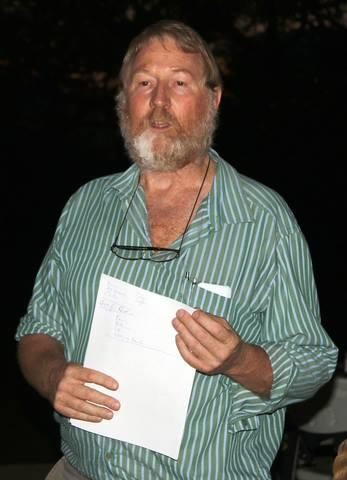
Newly-formed Namibian Chamber for Environment brings different sectors together
At the very first symposium organized by the Namibian Chamber for Environment on animal movements and satellite tracking in Namibia, researchers from the Ministry of Environment and Tourism and of various NGOs were not only presenting their projects and research results, but also found that the value of their work was enriched when they shared their information.
This led the participants to agree that they should work together more closely in future. A strong partner was found in the B2Gold Namibia mine. General Manager Mark Dawe pointed out that, while even the most careful mining will destroy part of the environment, there are ways for mining companies to invest back into the environment and into socio-economic development. The benefits created can comfortably exceed the costs.
“We as a mine destroy the environment, but we put a lot back and want to do as much as possible for the environment. Here at our Otjikoto Environmental Center we teach especially young Namibians the effect of mining, the environment and what we can do to keep the damages to a minimum and how to rehabilitate as best as possible. Children should learn here what damage can be done, how to avoid unnecessary damage and what a healthy environment looks like”, emphasized Dawe.
Speaking about the role of the newly-established Namibian Chamber of Environment (NCE) the CEO, Dr. Chris Brown said “We want to represent the environmental interests of our members and act as a consultative forum for them. We want to engage with policy and law makers to improve the environmental policy setting in Namibia, as well as effective policy implementation. It is also important to build the environmental skills in young Namibians”.
Another objective of the NCE is to provide support and advise to its members on environmental matters and best practices, as well as to facilitate access to environmental information. With over 30 environmental NGO members, creating an opportunity for members to meet and hold conferences and symposia on important topics is another important role of the NCE.
The symposium took place from 23 to 25 October 2016 at the Otjikoto Environmental Center of the B2Gold Namibia mine north of Otjiwarongo and was attended by over 30 researchers from the Ministry of Environment and Tourism, environmental NGOs and Universities.
Participants came from as far as Scotland, Austria, South Africa, Botswana, and the length and breadth of Namibia. They focused on research with satellite tracking of various types of animals, ranging from elephants, buffalo, zebra, oryx, large carnivores, crocodiles and vultures to seabirds such as cormorants, gannets and penguins.
The organizing committee consisted of Kenneth /Uiseb of the Ministry of Environment and Tourism, Dr. Morgan Hauptfleisch from the Namibia University of Science and Technology, John Mendelsohn from RAISON, Duane Rudman, Otjikoto Nature Reserve Warden, André Rousseau of the Otjikoto Education & Environment Trust and Dr. Chris Brown of the Namibia Chamber of Environment.
The NCE has eight program areas: Membership support, advocacy, environmental policy research, national facilitation, environmental information, young Namibian training and mentorship, fund raising and grants making. “It is important, that data and other information is shared between the different researchers and groups not only in Namibia, but across the subregion and internationally. It is important to develop relevant base data layers useful to a range of tracking data and at the same time keep up to date with international developments in techniques and technology” Dr. Brown pointed out to the participants of the symposium.
A lot of questions remained unanswered and more arose, when comparing the data and try to coordinate the findings. Why do animals respect park borders although there are no fences? Is it because they fear humans and their actions against these animals? Why do unfenced roads seem to be a barrier to elephant breeding herds, which avoid crossing them? Why do vultures breeding in South Africa, Botswana and Namibia seem to use the same core foraging areas across southern Africa, including in areas where the potential to get poisoned is the highest? These are all questions to be answered by working together and push research in this country forward. The NCE will play an important role.
Source: Informante
The proceedings of the Symposium are available on the Environmental Information Service (the EIS).

